For over 25 years, running has been a constant in my life, but with the recent onset of knee pain, my orthopedist has advised me to pick a new form of exercise, which has led me to yoga. I’ve toyed around with yoga as a way to stretch and meditate over the past couple of years, but now I am practicing a couple of times per week. I love how it leaves me feeling both mentally and physically. It has led me to a totally new idea that I am obsessed with – creating a yoga garden – a place in the garden that is designed to encourage and heighten my new yoga practice.
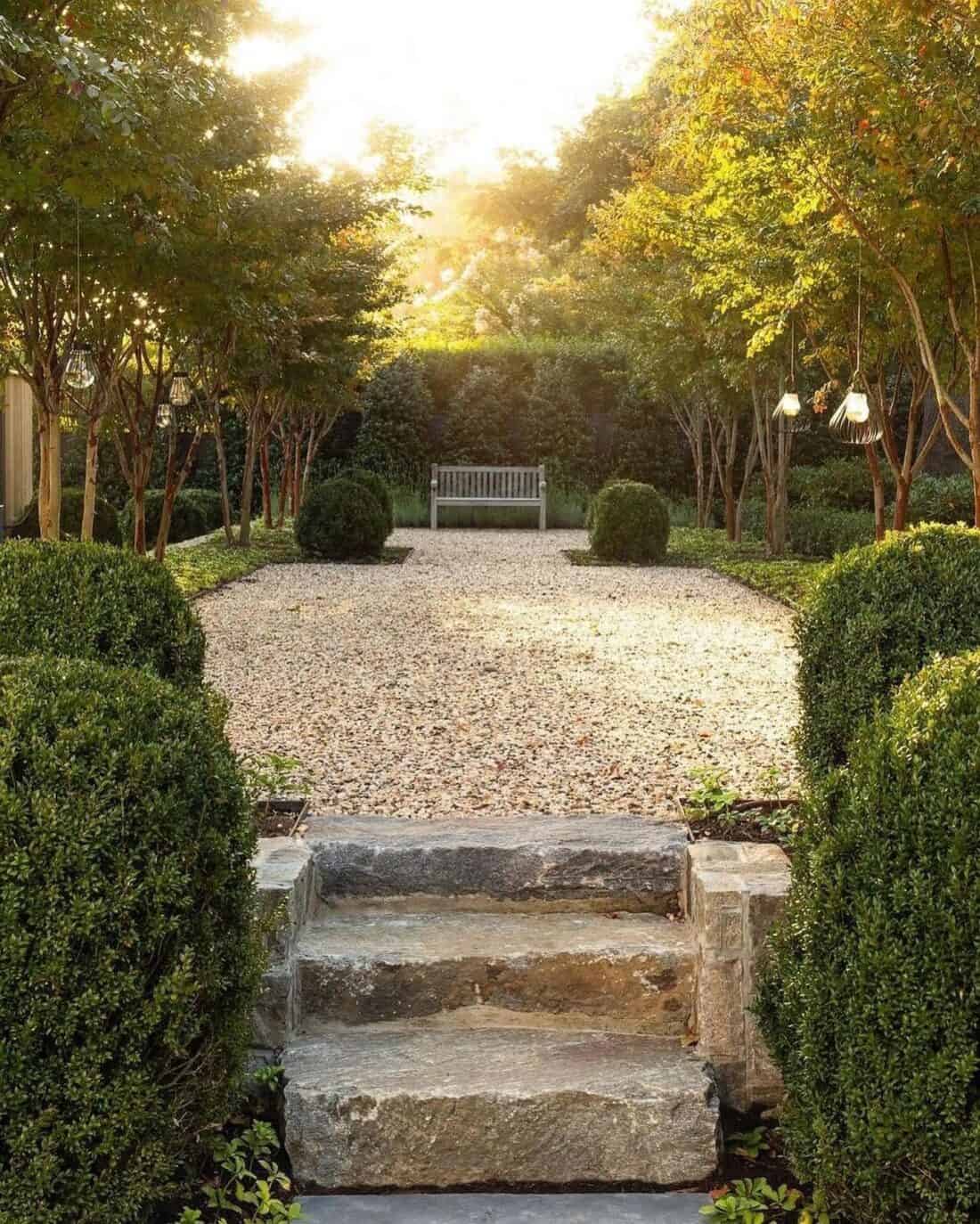
Ideas for a place to practice backyard yoga
I’ve been envisioning a garden with a variety of rooms, each with a different theme based on a yoga asana or pose. I just found out that Rochelle’s book has a whole chapter about this type of thing (and some of her ideas are below), but these are some of mine.
- The sun salutation garden…
- the animal poses garden…
- the warrior poses garden…
- the moon poses as a garden…
- and the Chaturanga garden. (actually, I am not so sure about the Chaturanga garden, but I just like saying the name).
Rodney’s yoga garden
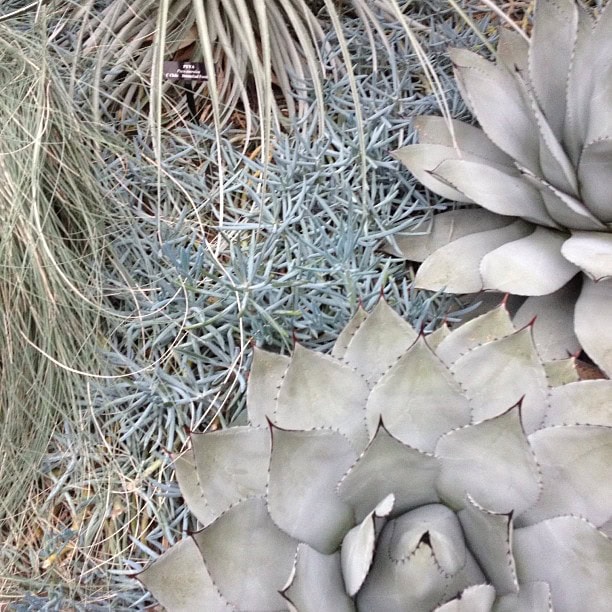
Silver plants for a moon-inspired garden?
image @sacallage
A peaceful and dramatic moss garden with artful containers and black stones.
created and photographed by atelier te.
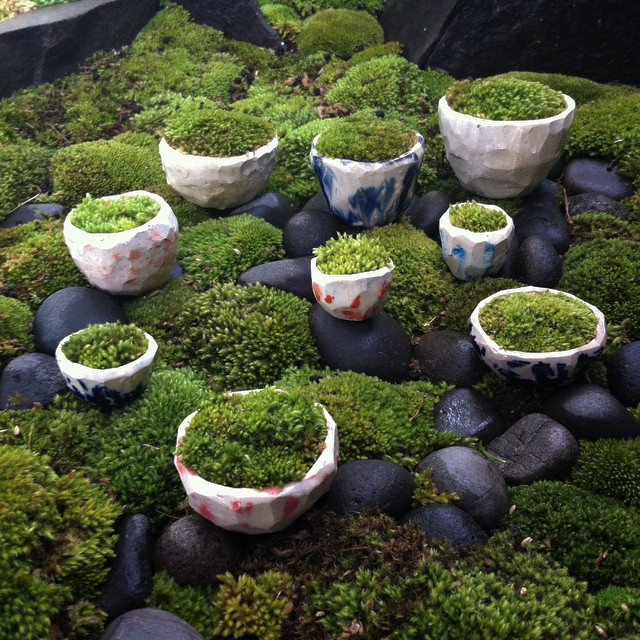
In my design, the center of each garden would be an oval of stone paving or a wooden deck where yoga poses could be practiced. The surrounding plantings would be designed to be seen while in the pose. In the sun salutation garden, maybe there would be a deck overlooking a moss carpet floor. When you are “falling” forward into your bow, I imagine you would stare down at the moss.
The plantings could also have plants that play off of the name of the poses. In the moon poses garden, we could plant full-moon maple, and moonflower, along with silver plants that make the area look like you are on the surface of the moon.
You could slowly progress through this so that the garden becomes an experience and a yoga session at the same time.
The concept is still very raw, so feel free to share your ideas on how to improve it. I really want to build a garden like this in the near future, and this winter, I am studying the details and history of yoga to develop a deeper understanding of the practice. Please share your ideas and suggestions below. Thank you! Namaste.
–Rodney
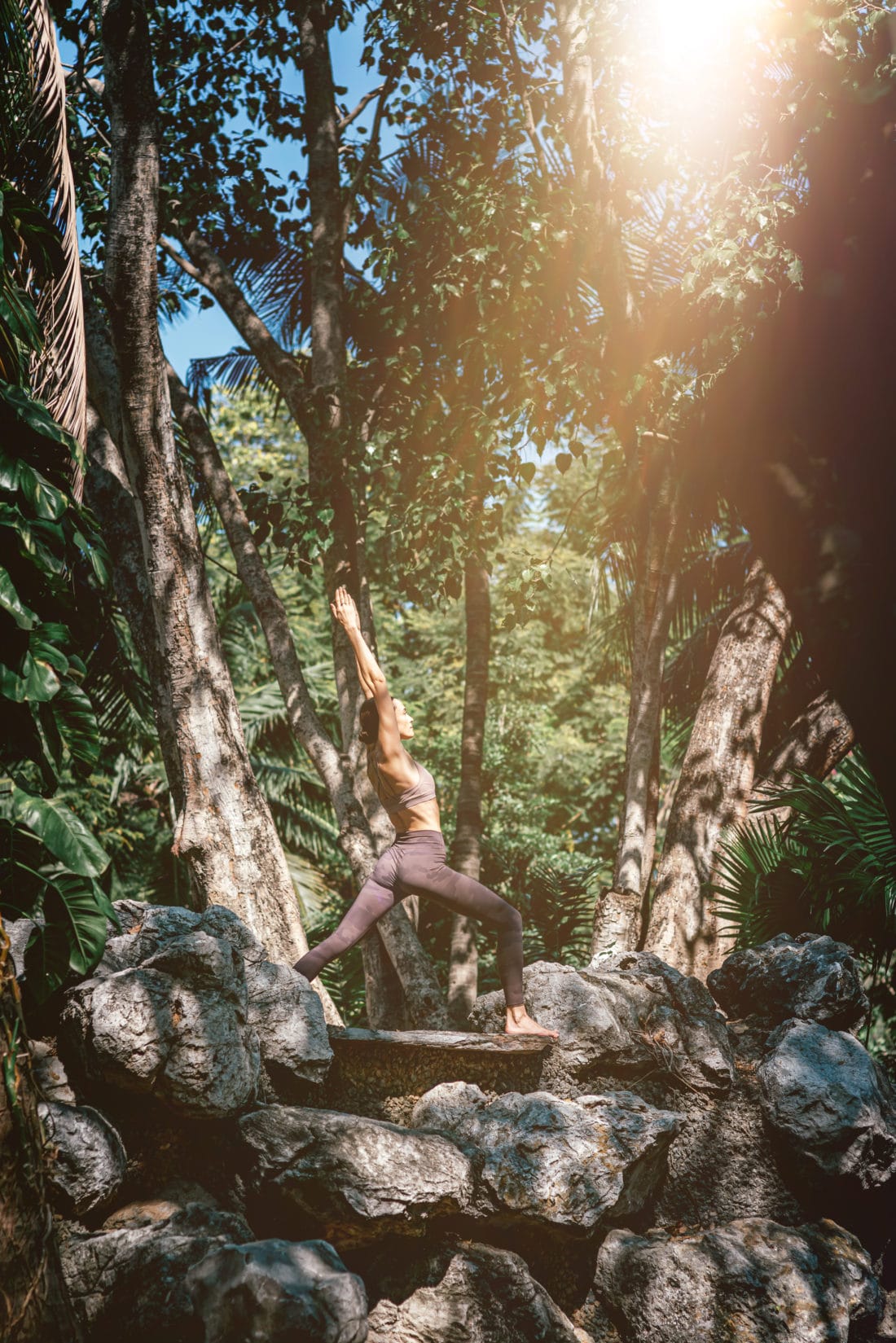
How To Design a Garden Place to Practice Yoga (from Rochelle):
Most of the time, when I enter a garden, my mind begins to settle. Unless, of course, that garden is my own, where often all I can see is an extensive and exhausting list of things I need to do.
For most people, though, entering a garden begins a mental passage from one state of mind to another, and in gardens specifically designed for relaxation, meditation, and the pursuit of serenity, the experience is magnified.
Through the ages, cultures of all sorts have used symbolism, geometry, color theory and a whole host of design tricks to shape surroundings that elicit emotion, provide platforms for calmness, and self-reflection, and help bodies and minds heal from the injury of everyday living. I’ve always thought that if your garden is comfortable and thoughtfully laid out, providing places to nap, eat, and rest, you have a pretty great start.
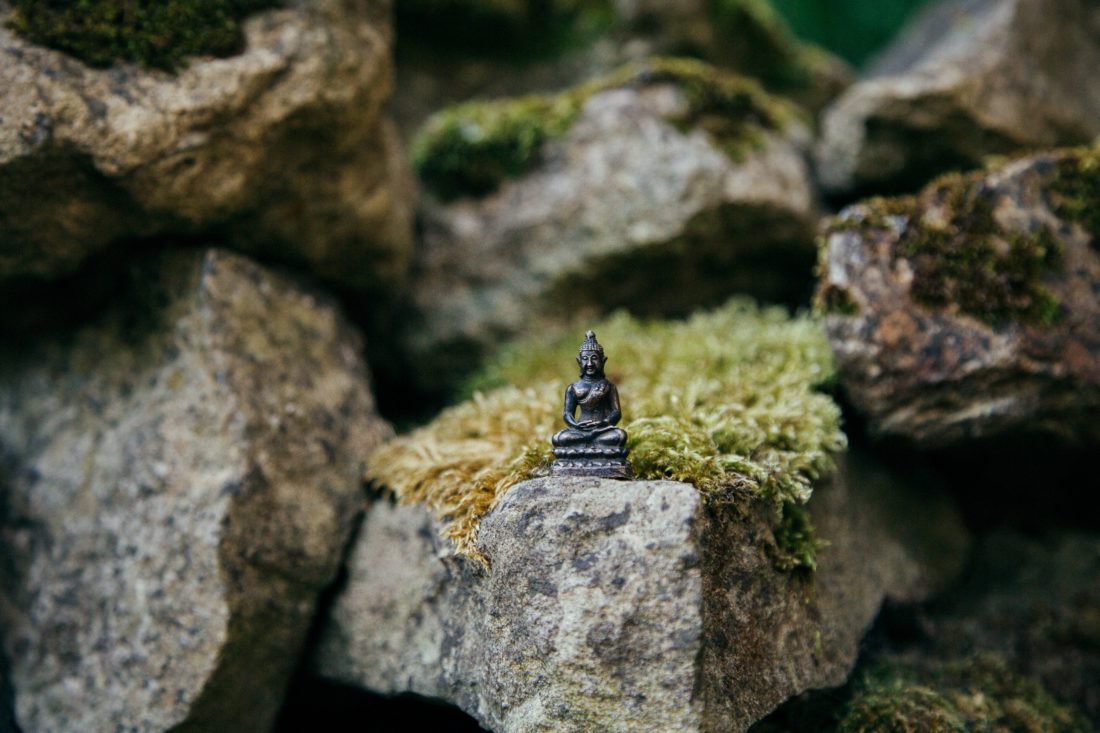
How to design a yoga garden
However, by taking cues from modern and ancient beliefs and methods, you can up the ante on creating that special place that soothes the soul—your soul.
Earth-based religions such as Buddhism, Hinduism, paganism, and Taoism, as well as principles of feng-shui, yogic philosophy, and astrology, can all provide a wealth of ideas for symbolic gestures and design intentions.
Your meditation might involve walking and then require a labyrinth, or maybe you need a place to practice yoga or tai chi. It might also be a place to perform the ritual ceremonies of prayer or simply a place of contemplation, but a garden such as this is always a place to quiet your thoughts and gain an increased awareness of the rustling wind and green leaves that surround you.
Enclose and Create a Garden Place for Peace
Close the garden in and actively shut out the rest of the world. This type of garden benefits from an enhanced entrance through which you must pass in order to arrive in this revered place. The Japanese Torii, for example, is a gate that separates the profane from the sacrosanct.
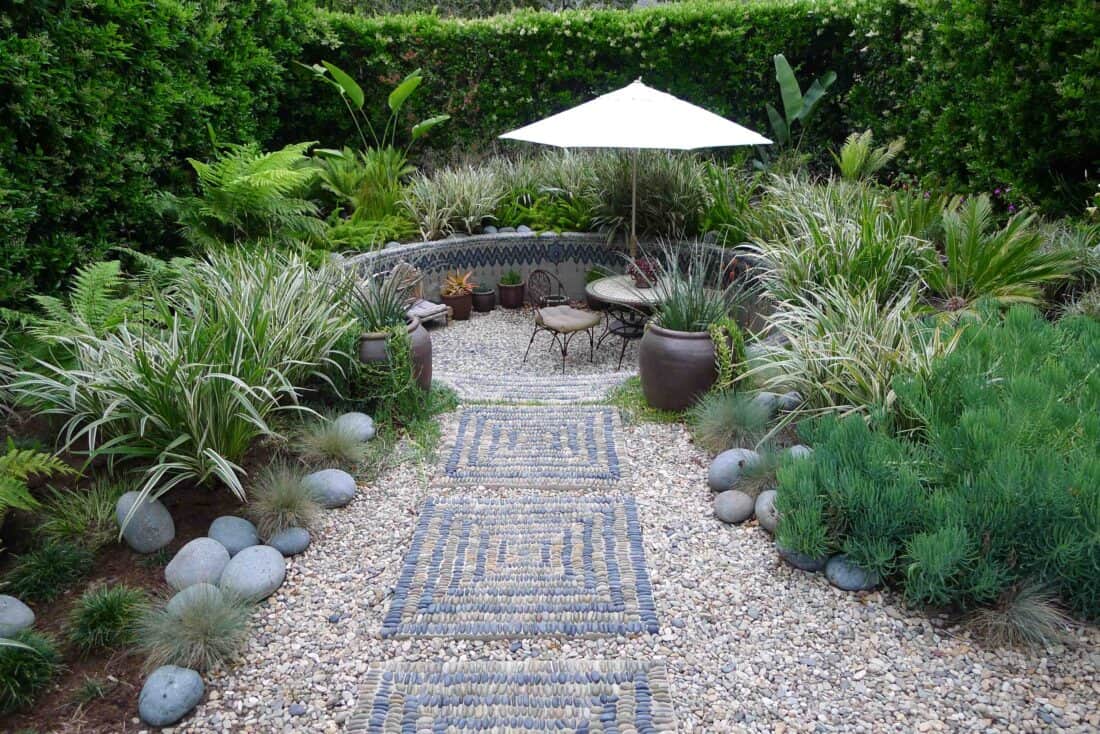
When creating your own backyard yoga space, aim to create outdoor spaces that appeal to all the senses.
Designed, built, and photographed by Jeffrey Bale.
Similarly this sunken garden creates a room, surrounded by earth that is protected. An entrance and a transition symbolize passage from one state of mind to another so make it significant and make it notable.
Make it Personal
Close your eyes and imagine a place where you feel safe, calm, comfortable, and at peace.
What does that look like and feel like?
That vivid mental image is your special place. While you are there, take a look around and make note of your surroundings. For some it is the ocean, or a garden, or a childhood home. For me, it is a cabin in the mountains in a grove of quaking aspens. Bring an element of your own special mental place into your real garden. It will help you to connect with your own mental peace.
Go Natural with Materials
When seeking to get in touch with your inner self and the world around you, nothing seems more counterintuitive than filling the area with unnatural plastic and synthetic materials. Ground yourself in the elemental qualities of raw materials like stone and wood.
If you are making an outdoor yoga platform, don’t use synthetic decking. Composites are often hotter and feel like plastic. Your yoga deck will last longer with a range of hardwoods, or you can be kinder to your body and plant a small flat turf area or use stone.
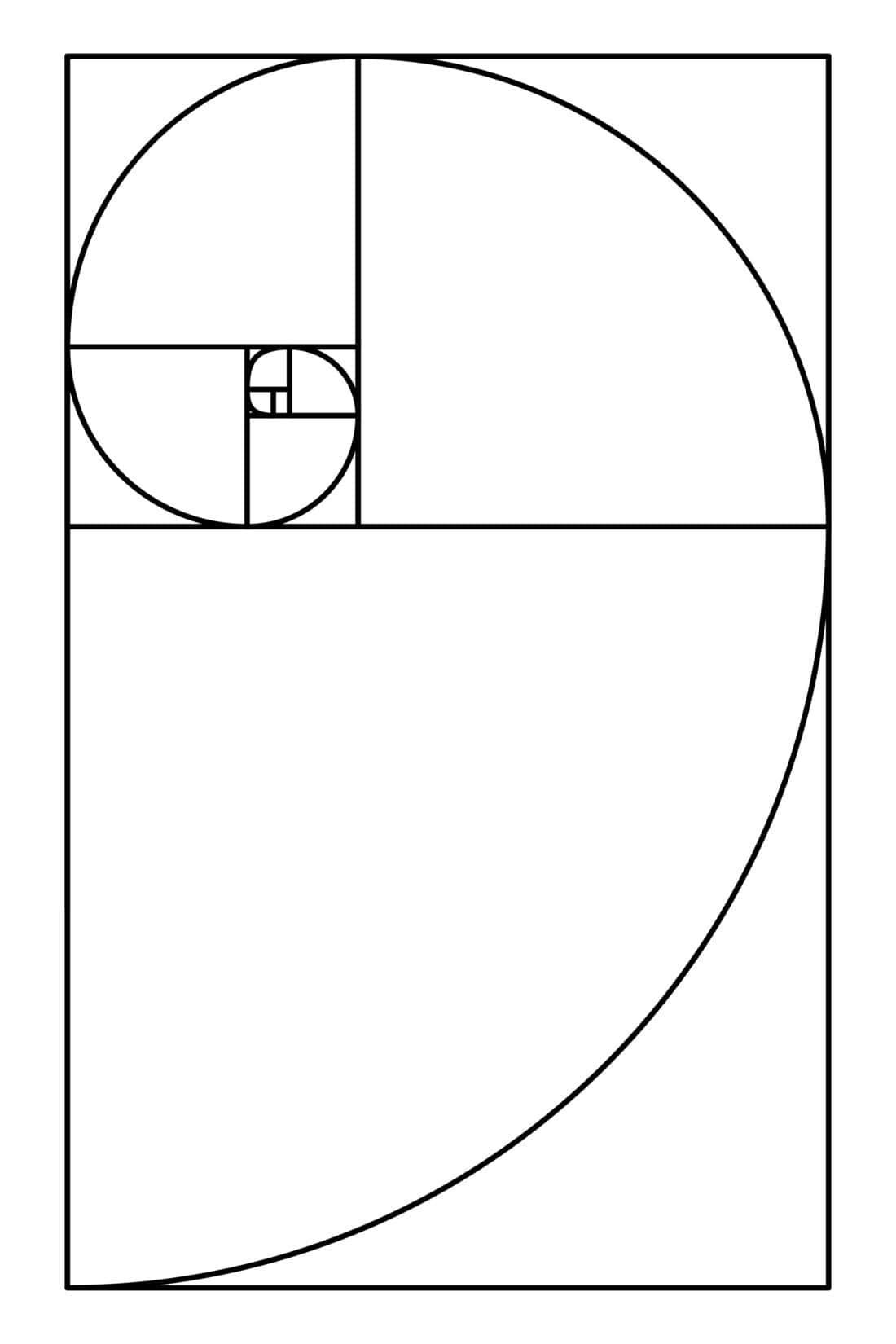
Fibonacci Spiral – The Golden Mean
A classic design tool for all sorts of designs will help you to strike balance and meaning in your designs.
A collection of sacred geometric patterns
By samiramay
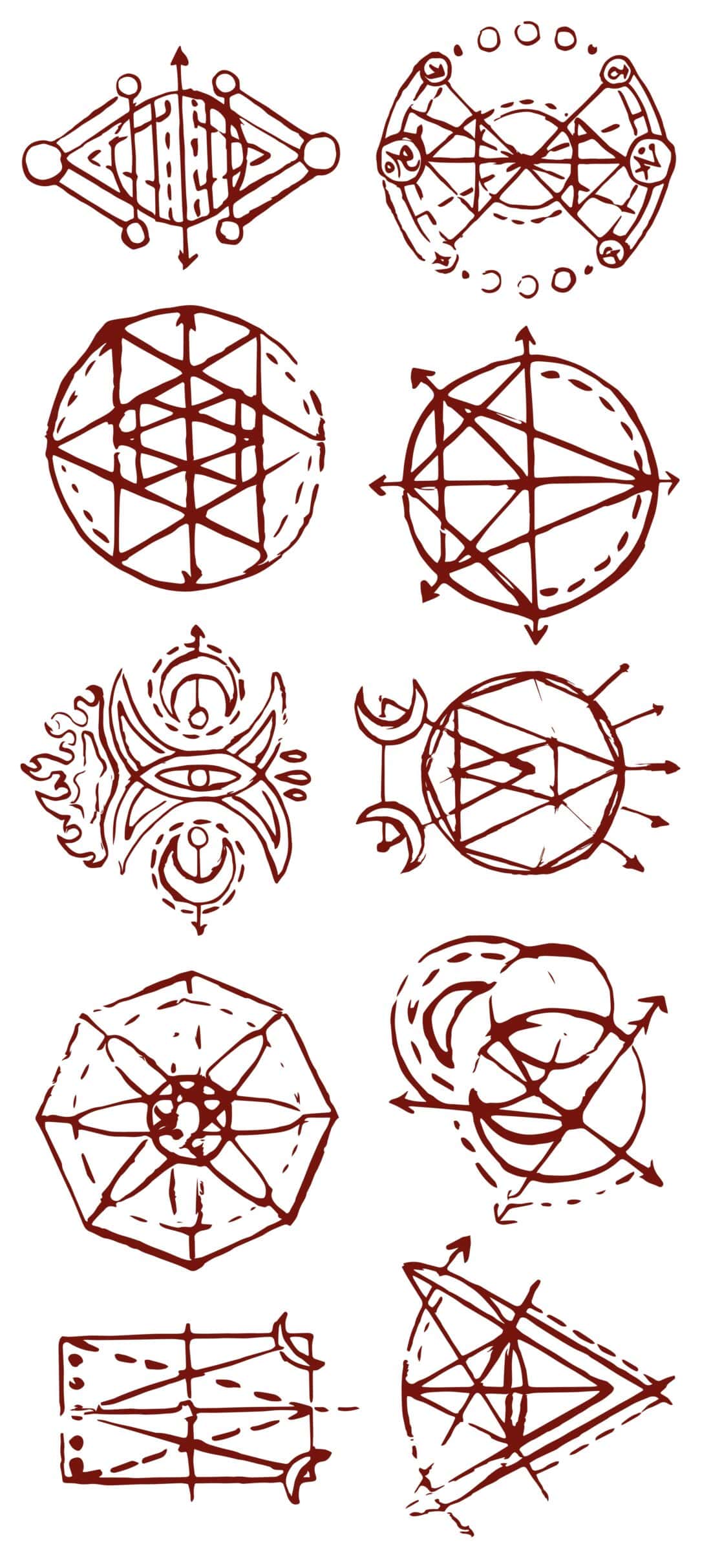
Incorporate Sacred Geometry
Discover the meditative art of mandala making or endeavor to wrap your head around Phi proportions and The Golden Mean. Sacred architecture is often full of hidden geometry that aims to mimic natural patterns and draw parallels between math, science, art, beauty, and spirituality.
At the very least try incorporating basic rectangular ratios where the longer side to the shorter side is the golden ratio into your layouts to make the design feel balanced and aesthetically pleasing.
Planting Ideas for Yoga Gardening
Growing a plant from seed, nurturing its growth and it experiencing its full blooming expression is similar to the yogic practice of setting an intention, nurturing the practice and finally loving and accepting one’s own personal expression. Additionally, gardening, like yoga, connects us to all things.
Plant The Elements
Earth, Air, Fire, and Water are frequently associated with the compass points (Earth- North, Air – East, Fire- South and Water – West).
In order to plant a true elemental garden, you must choose plants that have associations with each of the elements and plant them generally in the appropriate direction.
This is a bit tedious, but recognizing the associations of plants when choosing what you grow is a nice way to familiarize yourself with what you are growing and give your garden special meaning. If you are the creative type, you can make all sorts of associations, but here are some that have been carried through history.

The Earth Element represents stability and security; plants with similar associations include cattails, cinquefoil, and honeysuckle.

The Earth Element represents stability and security; plants with similar associations include cattails, cinquefoil, and honeysuckle.

Fire is associated with passion and plants of the same association include basil, strawberries, and Rosemary.

The Air element represents wisdom and knowledge; plants with similar associations include sage, marjoram and mint.
Plant the Chakras
In metaphysical traditions, Chakras are the centers of prana, life force or vital energy. Chakras are frequently mapped to the human body and are often described in colors. Planting by the chakras would, therefore, be to choose plants according to color and similar symbolism to the chakra.
Red for the Root Chakra
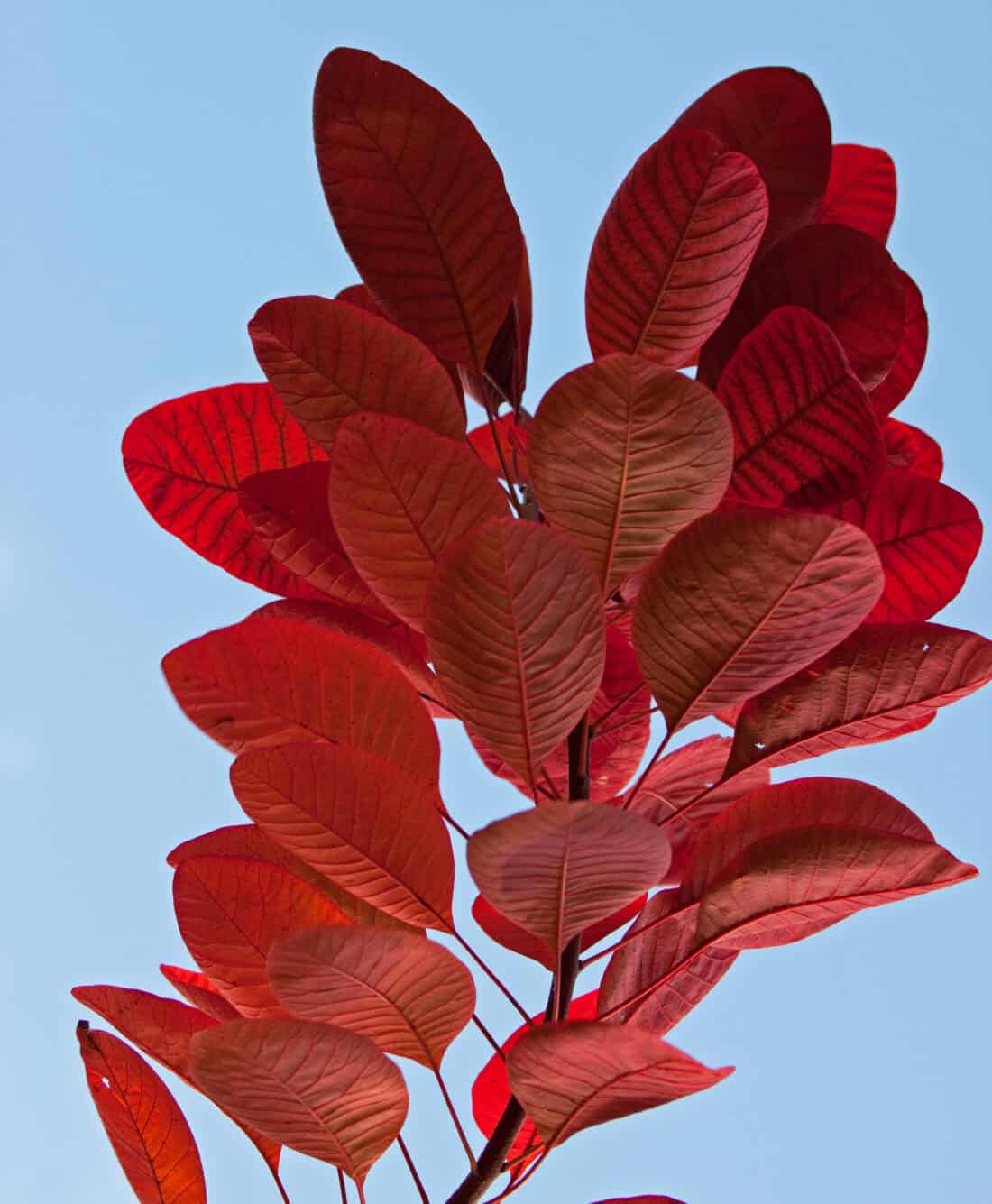
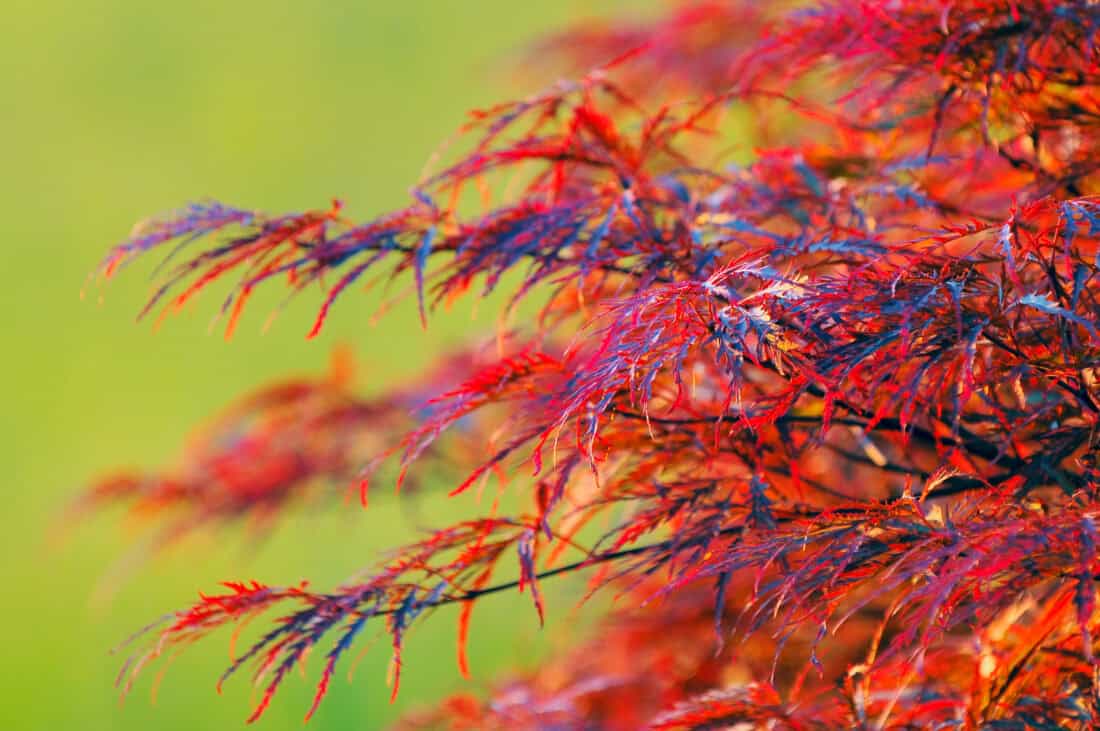
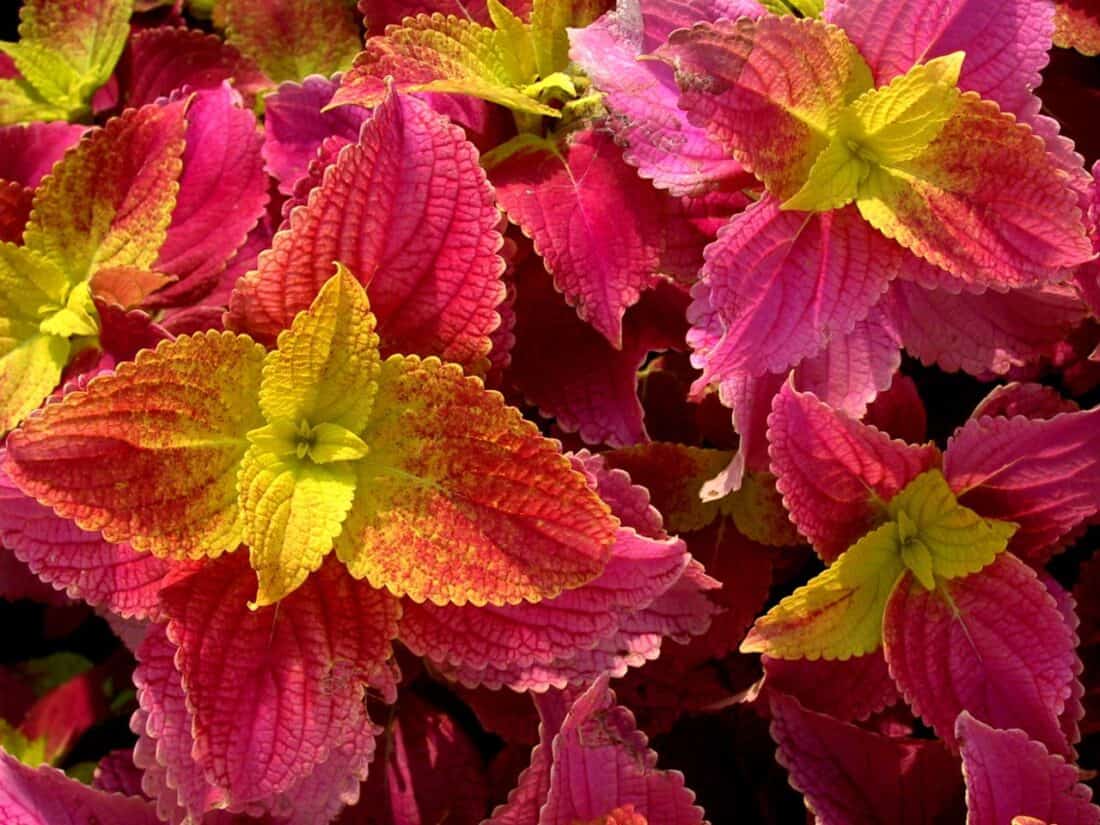
The Root chakra is colored red. You do not need to pick purely by flower, red can be found in leaves and berries as well.
Orange Plants for the Sacral Chakra
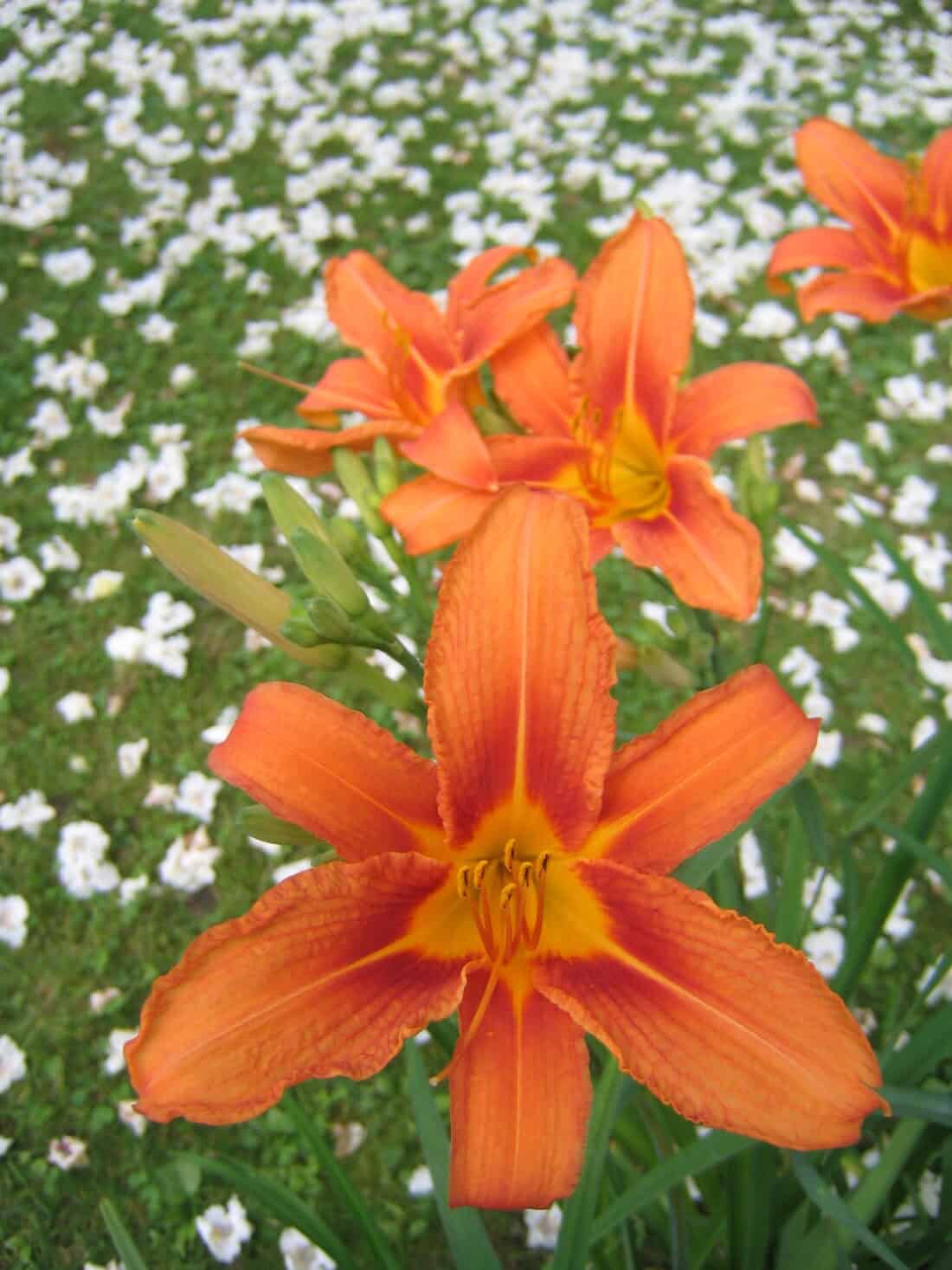
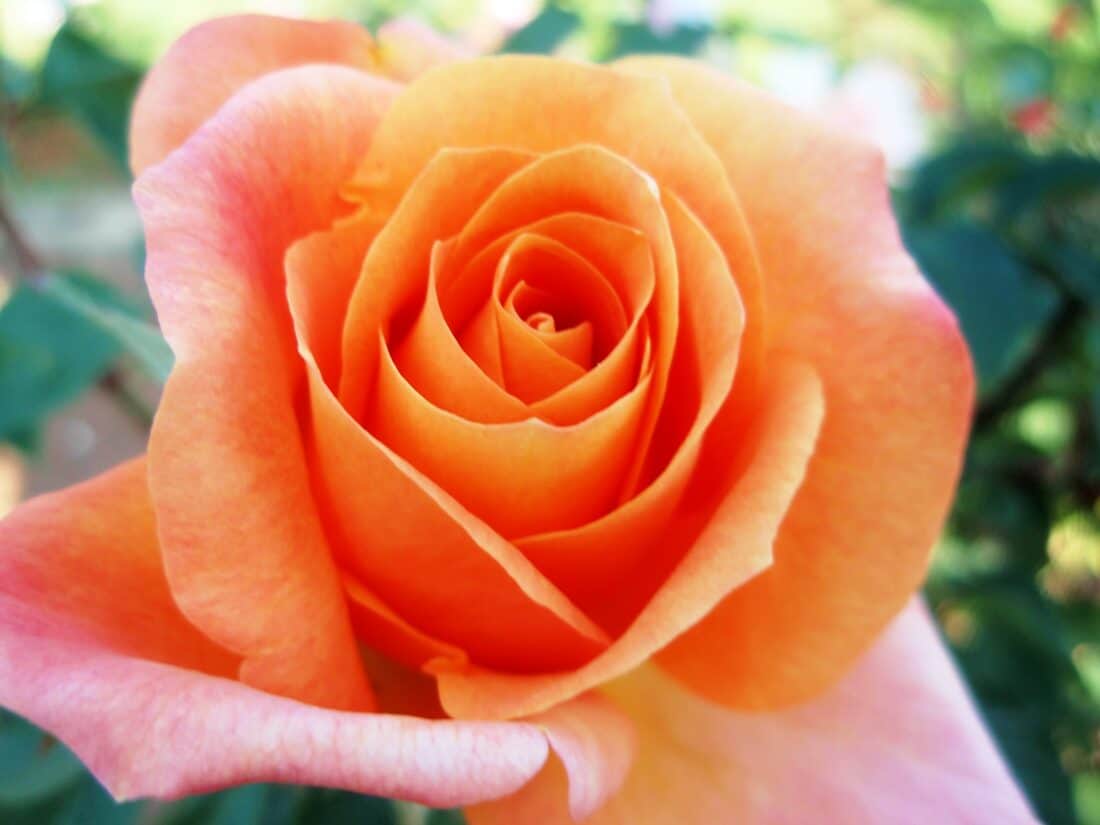

The sacral chakra is focused on sensuality and self esteem and is colored orange. Consider choosing plants that not only have the color but also a romantic perfume.
Yellow Plants for the Manipura Chakra
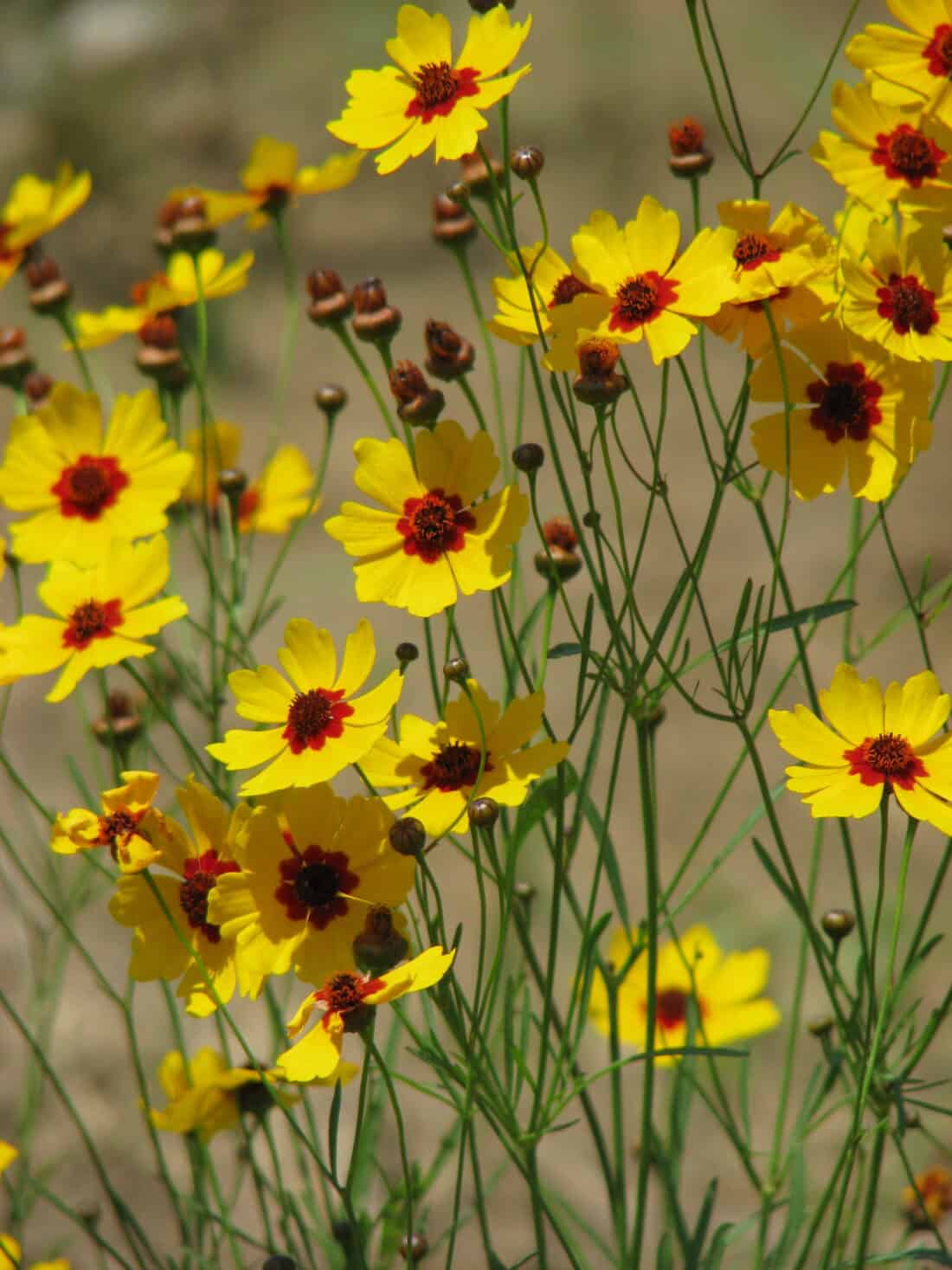
>>> See Also 50 Natives: Nebraska: Coreopsis (varieties) – Tickseed
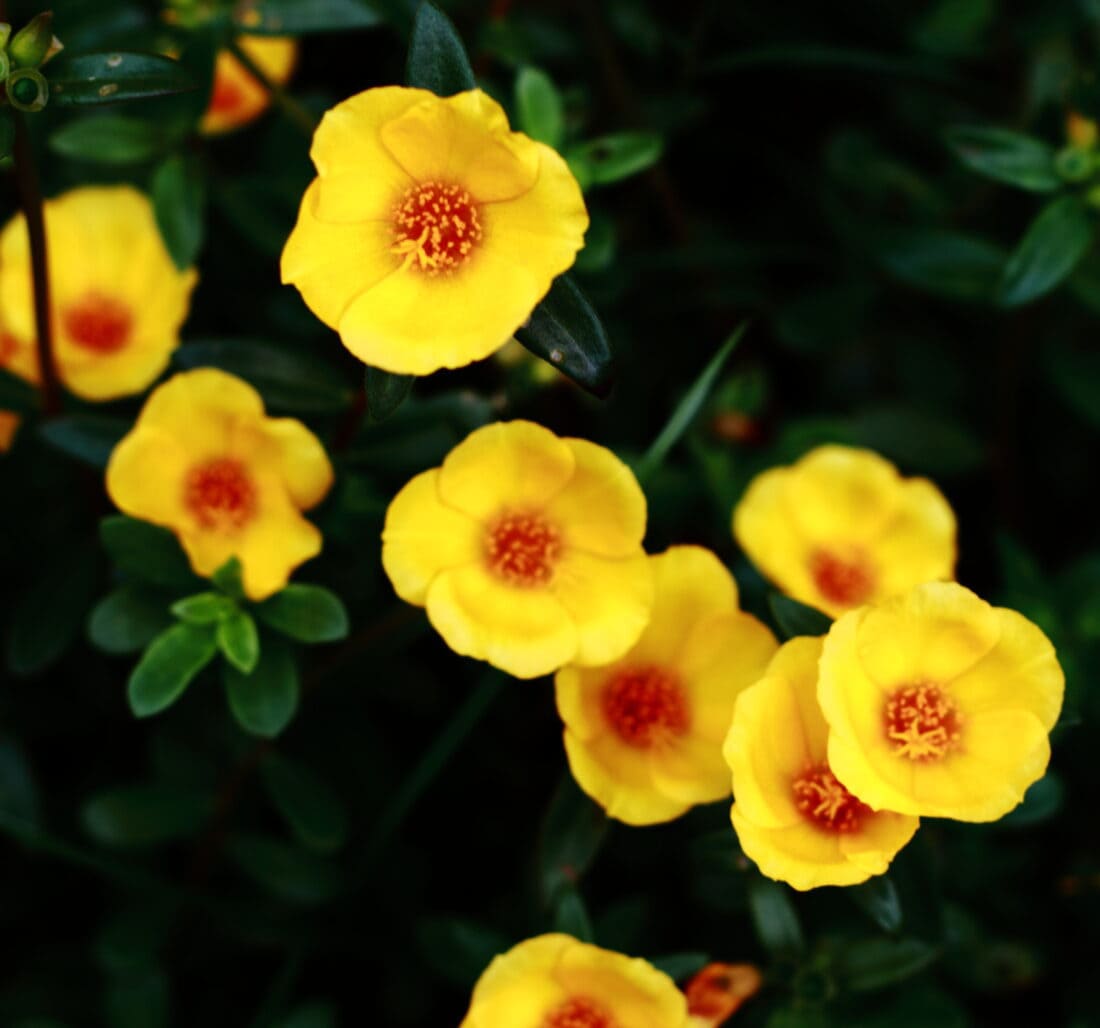
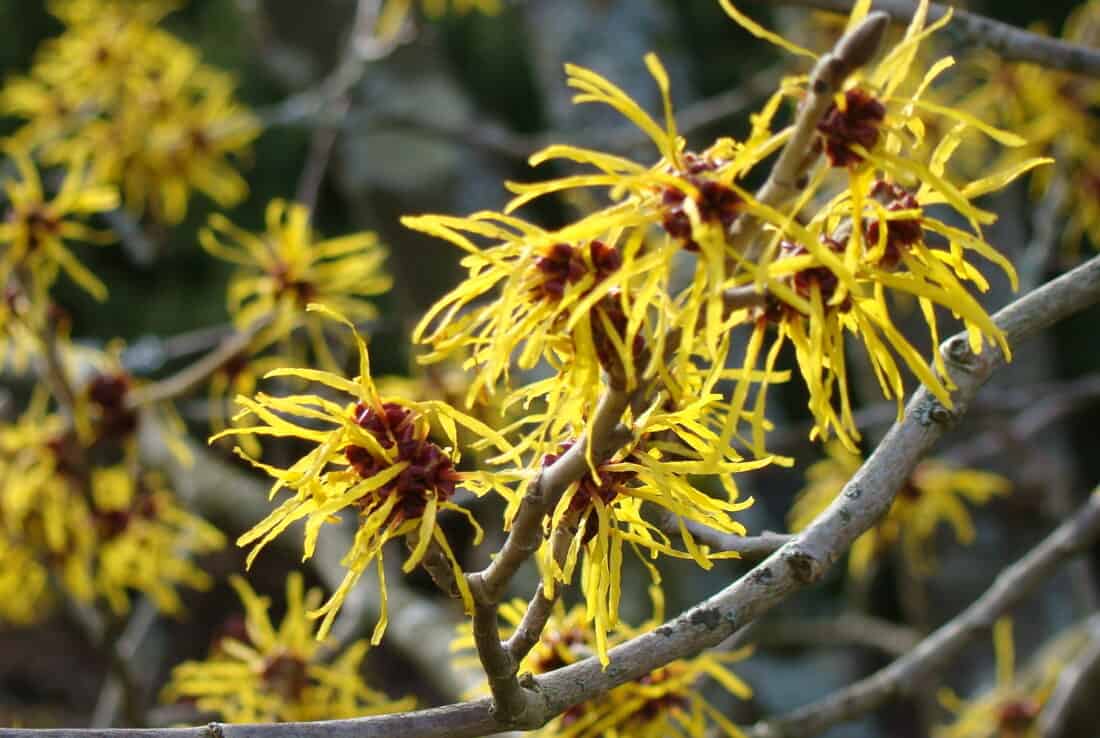
>>>See also The Common American Native Witch Hazel: Hamamelis virginiana
Manipura or the chakra of the solar plexus is yellow. It supports our personality, humor and ability to have a good laugh. Pick plants for their bright happiness.
Green Plants for the Heart Chakra

>>> See also Everything You Ever Wanted to Know About Garden Moss (+ didn’t want)
The heart chakra is green and it evokes harmony, peace and love. If I were to make a meditation garden for myself, I would focus on this alone, forgoing all floral brightness for the peace and calm of simple green.
Blue Plants for the Fifth (Throat or vishuddha) Chakra
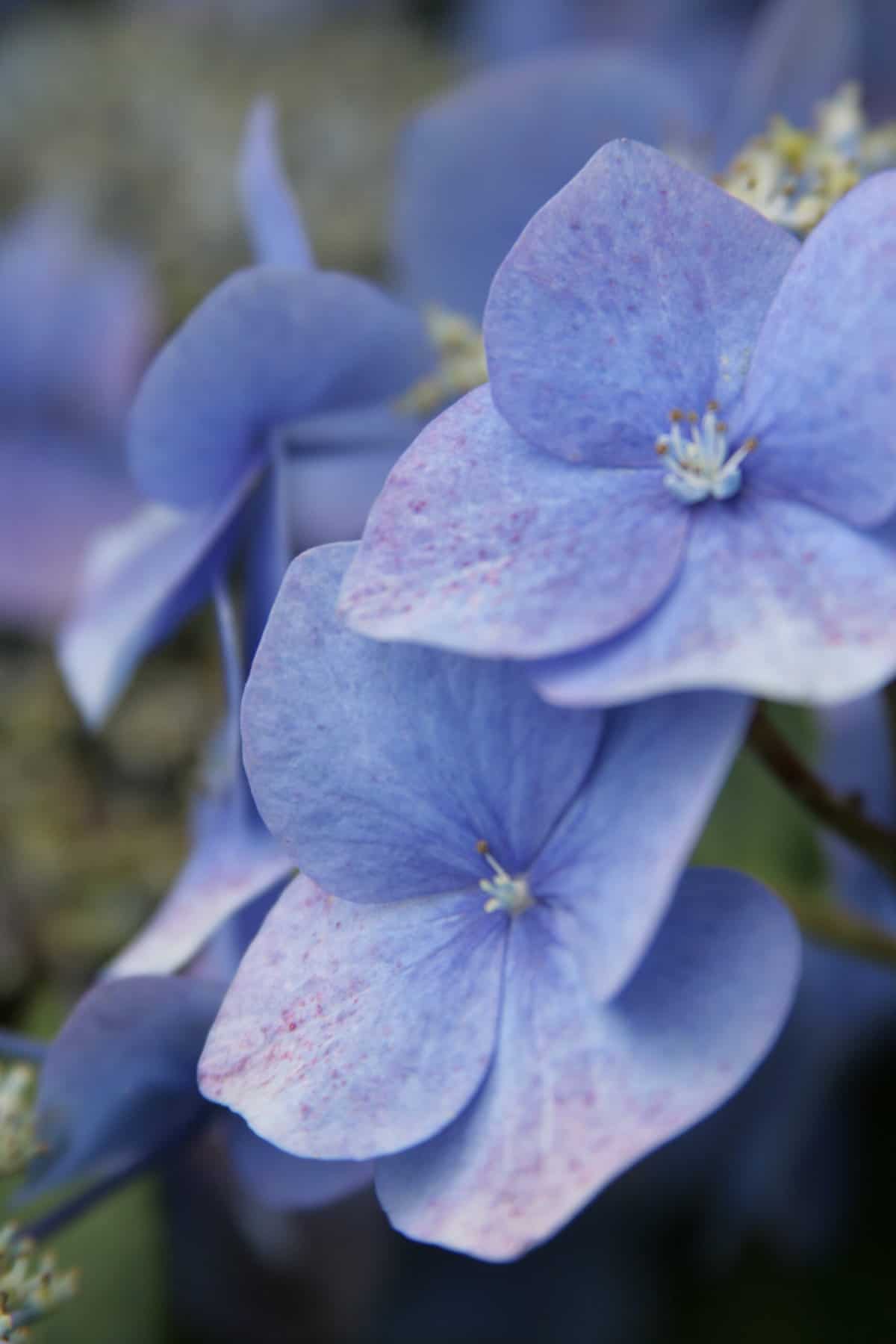
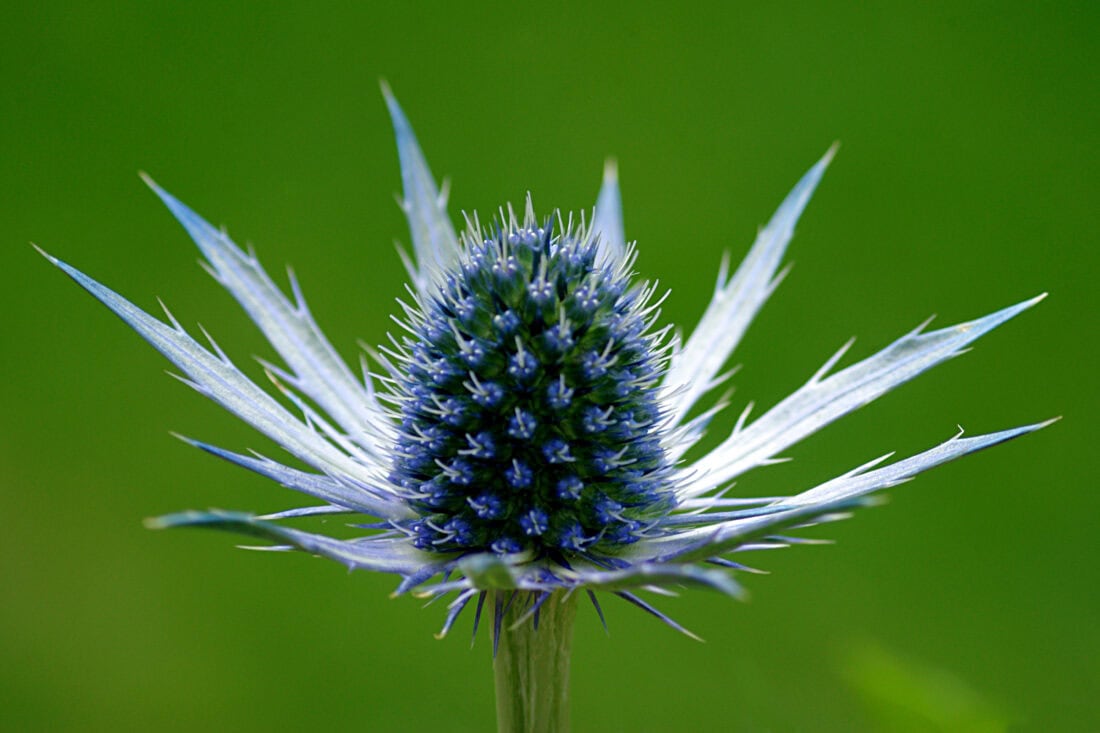
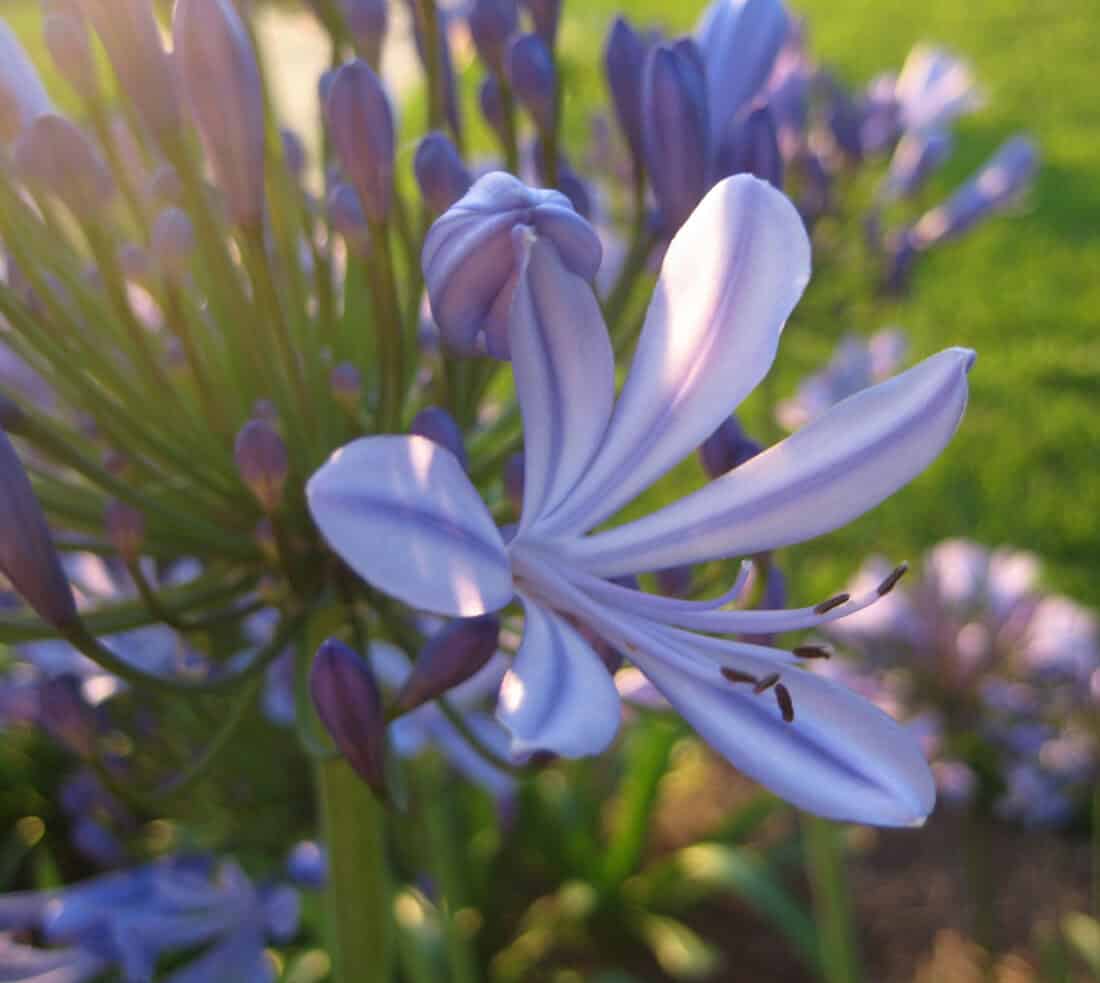
Communication and the color blue are associated with the fifth chakra. This can be symbolized in plants, but also perhaps with the flow of a water feature.
Purple Plants for the Third Eye Chakra
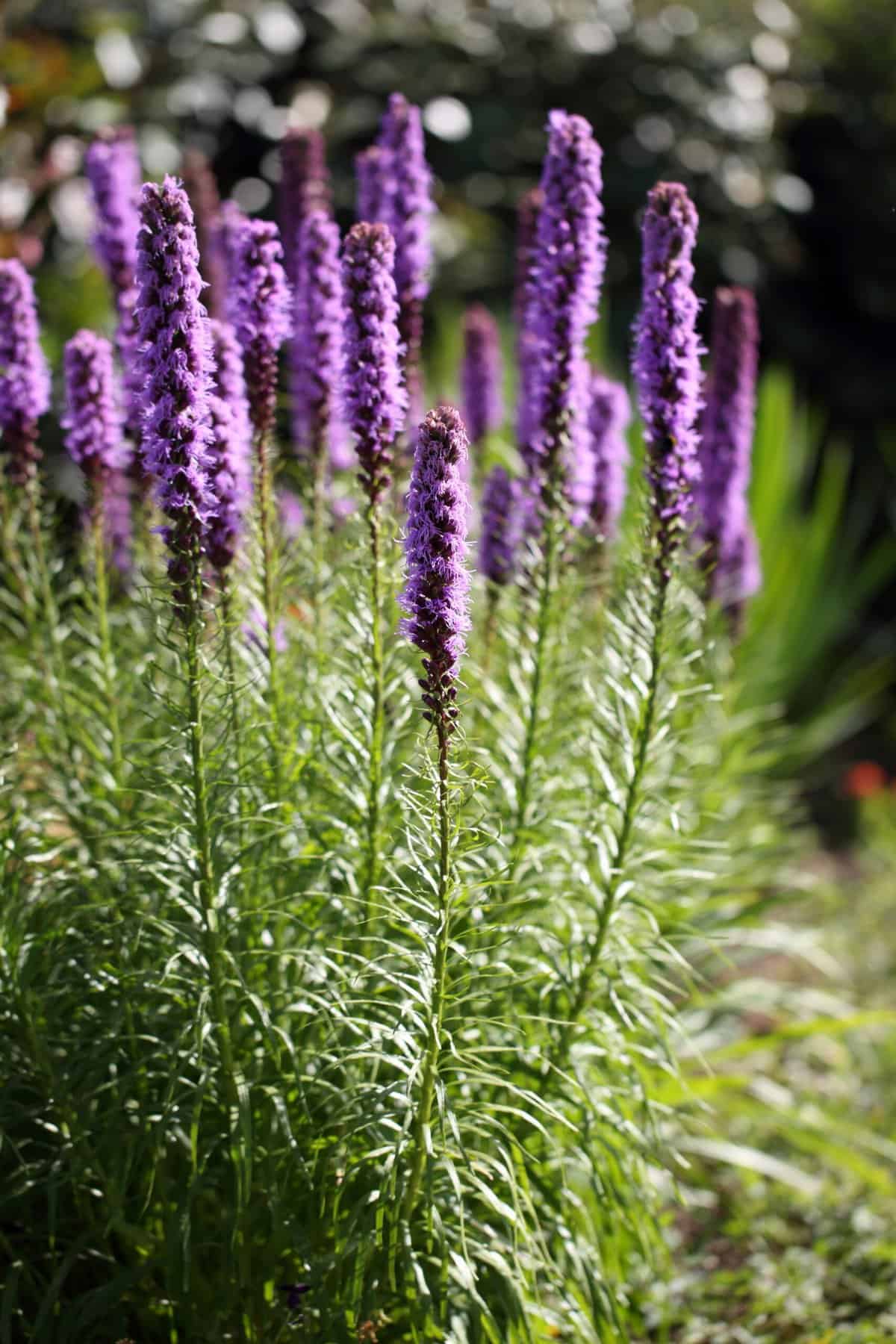
>>>See Also Spiky Liatris Spicata – Prairie Gay Feather Spices up the Garden

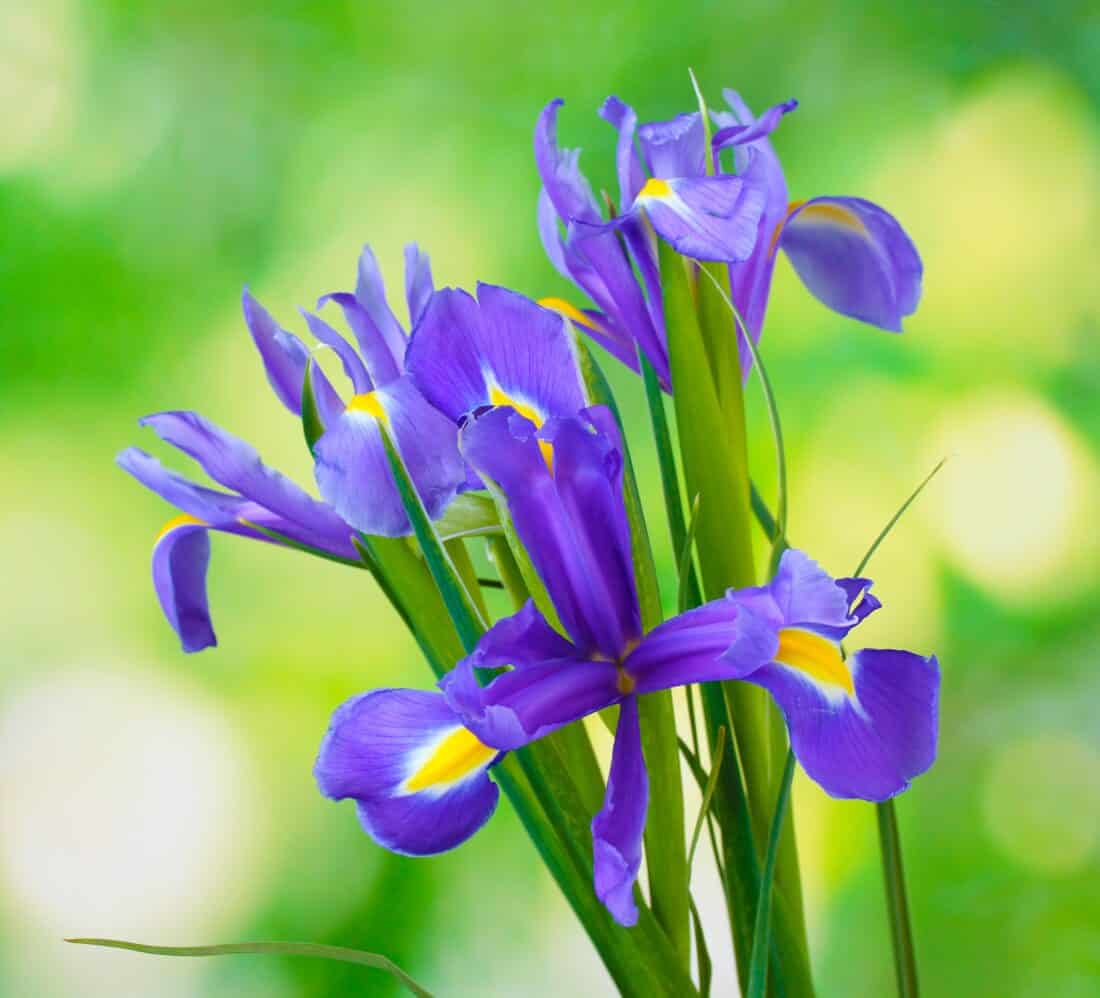
Indigo and deep purple represent the chakra of the third eye or the brow. Complex plants or highly geometric plants represent the focus on intuition and thinking.
White Plants for the Crown Chakra
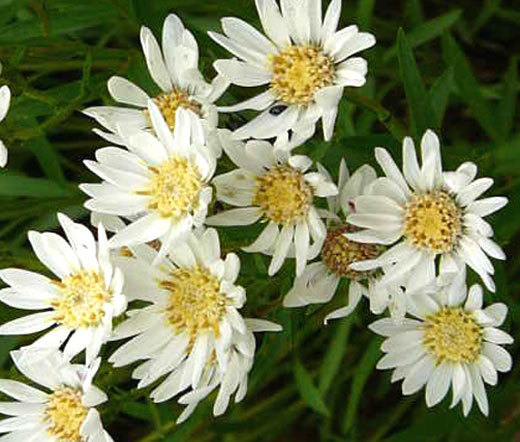
>>>See Also Planting Aster ericoides for a fall snow flurry of flowers
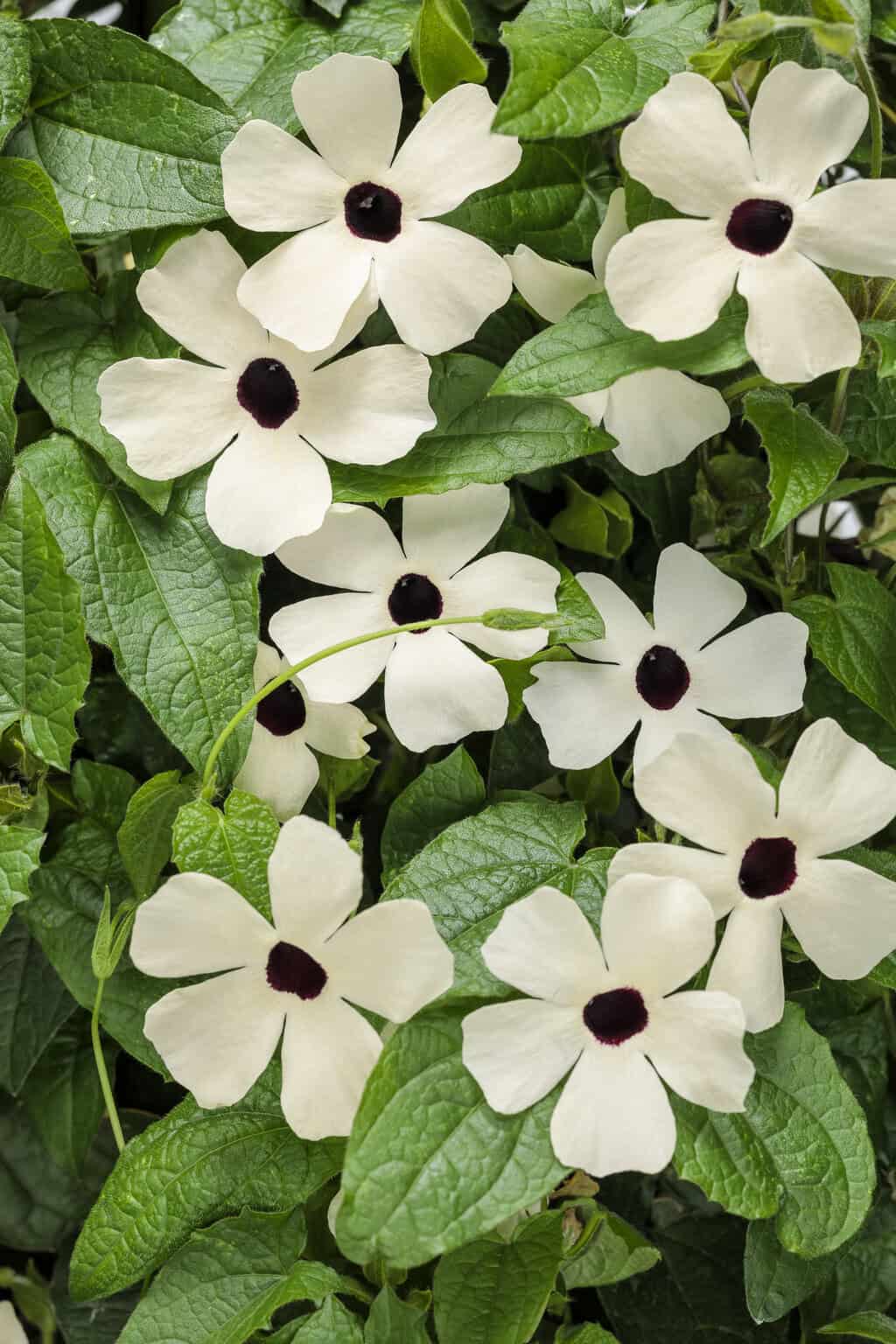
The crown chakra centers on spirituality and divinity and encompasses all the colors – so it is generally depicted as white. Translucence and light reflection can also be played with to make this symbolic reference.
Other Backyard Yoga Garden Design Elements
Inspired By Air
Air gardens are full of movement and light. The wind rustles through trees and plants, and they sway and dance. There are open views of the sky, chimes played by the wind and tiny creatures who happily buzz about. Incorporate things that encourage thought and ideas. Art and swings are lovely additions to air gardens.
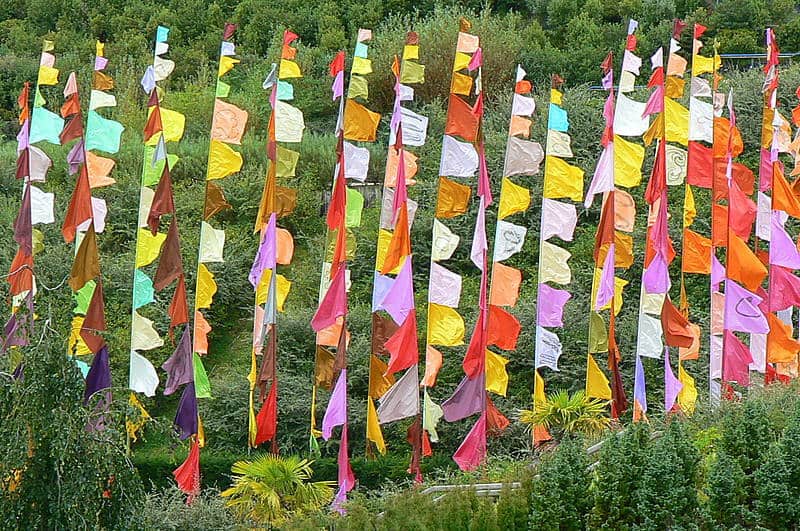
Enjoy Making a Water Garden
Flowing lines (nothing straight) and quiet contemplation characterize a water garden. A stream, a pond filled with Koi or a fountain will quiet outside noises with their trickles. Moss and lush dampness will ground the space.
Lotus flowers, symbolic of water and its flow, can be used in all sort of decorative motifs.
Whites, both in flower and furniture, soothe and grottos, caves, and earthy damp places provide a calming coolness.
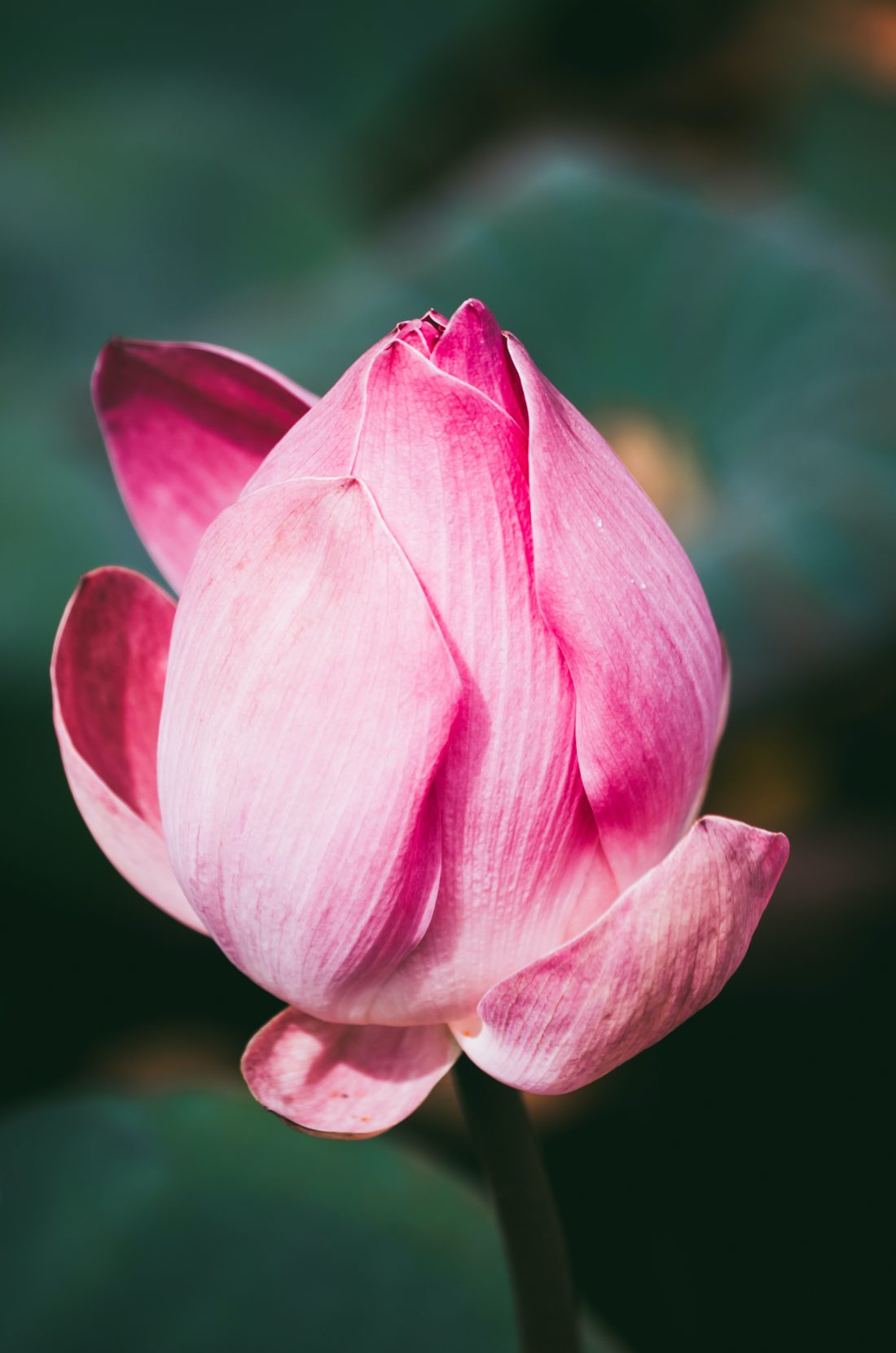
Fire gardens
Fire gardens endeavor to be suntraps. They have fireplaces, are dressed in red and maybe even embrace thorny plants. They are passionate and ready for action. Actual fire elements can come in a variety of forms from torches, to fire burning bowls to incense burners.
Adding the warmth and soul of fire to your garden can be accomplished in a variety of ways. There are three main ways to achieve the fire effect and you may find that for planning reasons or others that some are not an option and others might be more suitable in your situation.
- Open Natural Wood Fire – The basic option is the same one that Neanderthals used. It is however banned in many places for air quality and fire safety reasons. Wood fires can be made in all sorts of vessels or even on the ground within a fire ring.
- Gel Fire – Typically used in urban areas, gel fires are much like a can of cooking sterno. They come in a variety of forms, and because of the cleanliness of the fire (no sooty smoke), the complete flexibility of placement, and the ability to control the size of the flame, they lend themselves to applications where a modern look is desired. Or, perhaps you just want a tiny fire feature that you can put just about anywhere. Considered a green option, these fires are easy to light, require no venting, and you can add aromatics to the fuel to create a scented fire.
- Gas Fire—Gas fires are typically piped into a home’s gas main and thus can be lit with a flip of a switch. The installation expense is not insignificant, and the practicalities of running lines can also be a design challenge that makes the placement of these fires tricky. The upside is that you don’t need to refuel.

Earth-Based Garden Design Ideas
Ground yourself in earthy gardens. Orchards and vegetable patches are obvious types of earth gardens, but so too are those that incorporate earthy elements like twig art, wood and trees, and earthenware like Hypertufa. A sunken area, where literally, the earth more significantly surrounds you, is often a place where we feel particularly stable and secure.
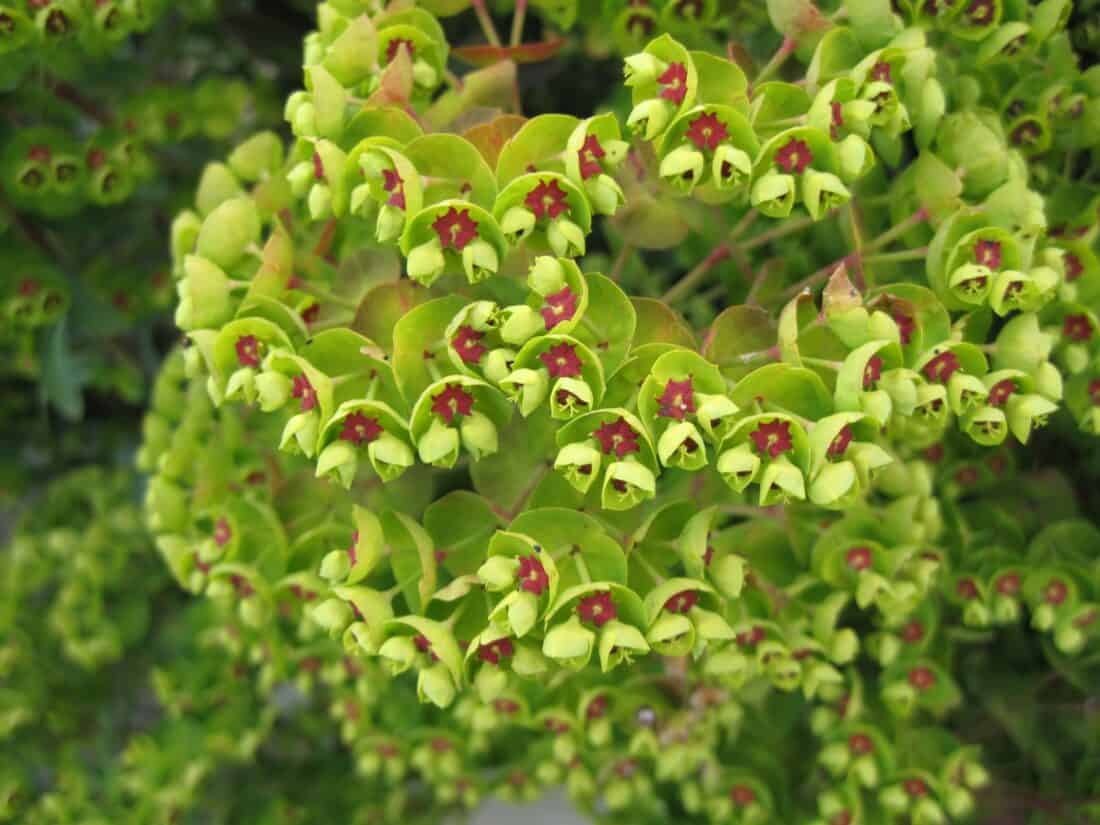
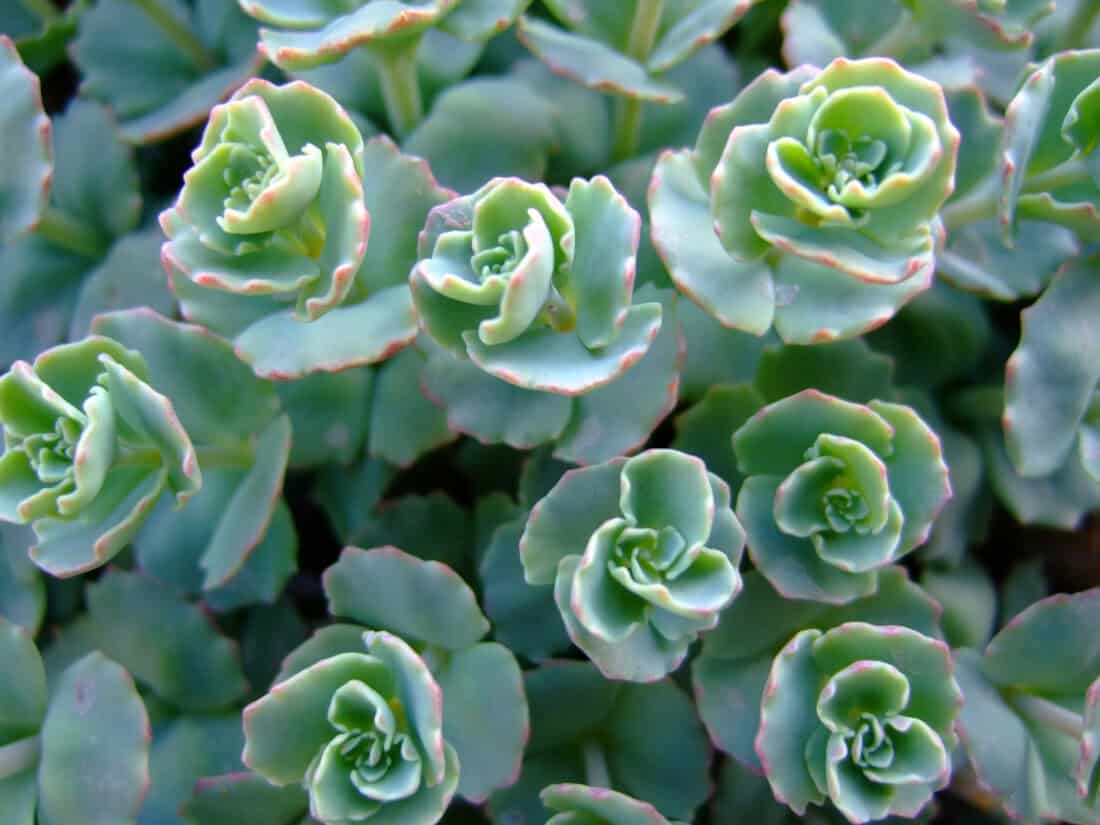
I definitely love this idea! For my part, I would add slightly perfumed plants to the design.
Love it! Sounds like the makings of a retreat center. I’m a yoga teacher and have fantasized about having a nature-based set-up for classes when unable to practice outside. For your garden: definitely wood platforms, not stone—pretty but impractical for real practice. Moon poses=white flowers, twinkle lights for evening practice. Animal asanas=topiaries (I’m not a huge fan, but would be fun for kids). Sun salute poses=the obvious sunflower garden? Warrior= arching, reaching, tall plants, like bamboo,(strong and flexible) or aspens (think Tree pose). Savasana=a winter garden, at rest. Have fun and let us see what you come up with!
YEAH baby, I think I have a foot or two left of space around here somewhere, LOL. (I have us all gardened out…) I think my wife would appreciate this as much as I would. May just have to give it a go.
Hmmm cool concept! I could see it more as a calendar photoshoot than an actual place to do yoga, but I like the idea of the poses driving the plant selection and design.
concept is so good.The picture you using that is great.Great post!! very informative.